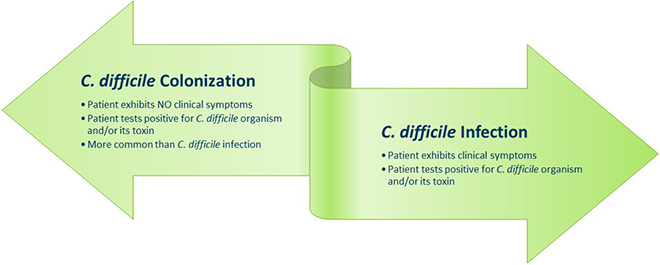C. difficile Toolkit for LTCF
Related Topics
Contact Info
C. difficile Surveillance
Clostridioides (Clostridium) difficile Toolkit for Long-term Care Facilities
Surveillance is the ongoing, systematic collection, analysis, interpretation, and dissemination of data regarding a health-related event to reduce morbidity and mortality and to improve health.(1)
The essential components of a surveillance system are:
- Standardized definitions
- Identification of patient populations at risk for infection
- Statistical analysis (calculation of rates using appropriate denominators, trend analysis, etc.)
- Feedback of results to all stakeholders (managers, directors, primary caregivers, senior leadership including administrators, governing boards, trustees, etc.)
In order to standardize the identification of CDI, the Centers for Disease Control and Prevention’s National Healthcare Safety Network (NHSN) established Clostridium difficile Laboratory-Identified Event surveillance guidelines. Identifying CDI through laboratory-based surveillance allows a much less labor-intensive method to track C. difficile, without clinical evaluation of the resident. This provides proxy measures of C. difficile health care acquisition, exposure burden, and infection burden based solely on laboratory data and limited resident admission/transfer data.
- CDC: Surveillance for C. difficile, MRSA, and other Drug-resistant Infections
Learn more about reporting CDI in NHSN. - Minnesota providers may also contact the MDH HAI Unit for questions about reporting CDI in NHSN:
Health.HAI@state.mn.us or 651-201-5414
Colonized vs. Infected
Because C. difficile is a common bacterium in the human gut, the bacteria can be detected in diagnostic tests even though the resident is not showing any symptoms. It is important to distinguish between these colonized cases and true CDI. Testing asymptomatic residents can lead to a perceived higher incidence of CDI in your facility.(2)

NHSN Surveillance Definitions
- CDC: Surveillance for C. difficile, MRSA, and other Drug-resistant Infections
NHSN provides standardized definitions for CDI in LTCF. The CDC provides a complete overview of NHSN surveillance protocols. - CDC: Laboratory-Identified Multidrug-Resistant Organism (MDRO) & Clostridium difficile Infection (CDI) Events for Long-Term Care Facilities (LTCFs) (PDF)
This CDC document provides more information on classifying and reporting C. difficile cases.
References
1. Siegel JD, Rhinehart E, Jackson M, Chiarello L, and the Health care Infection Control Practices Advisory Committee. 2007 Guideline for Isolation Precautions: Preventing Transmission of Infectious Agents in Health Care Settings. Available at: http://www.cdc.gov/hicpac/pdf/isolation/Isolation2007.pdf
2. https://www.cdc.gov/HAI/organisms/cdiff/Cdiff_faqs_HCP.html